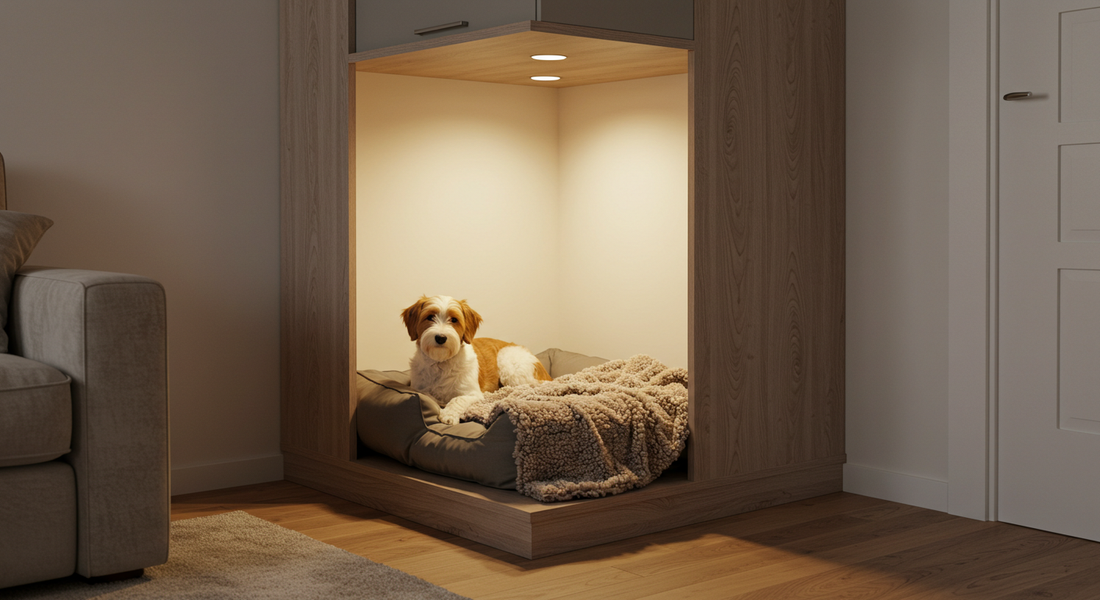
Cold Weather Comfort: How to Keep Your Pet Warm and Happy Indoors
Share
Introduction
As temperatures drop, our homes become a retreat from the cold—but what about our pets? Just like humans, animals feel the chill and need extra support to stay warm and comfortable during winter months. For indoor pets, the colder season brings its own set of challenges: drafty floors, dry air, and reduced activity levels can all affect their well-being. At Snuggle&Go, we believe in creating environments where pets can thrive in every season. This post offers practical tips on how to keep your dog or cat warm, content, and healthy throughout the colder months—all while making your home a cozy sanctuary for your furry companions.
1. Understand Your Pet’s Cold Tolerance
Different pets have different responses to cold. Small breeds, short-haired dogs, elderly pets, and cats that are primarily indoor-based often struggle more with cold conditions. Signs your pet may be uncomfortable include:
- Curling up tightly to sleep
- Seeking out warm surfaces (like floor vents or your lap)
- Shivering or avoiding cold tiles
- Reduced activity or reluctance to leave warm areas
If you notice these behaviors, it's time to make some seasonal adjustments.
2. Choose the Right Winter Bedding
Warm bedding is the foundation of indoor comfort for pets in winter. Opt for thick, insulated beds with high sides to help trap heat. Materials like memory foam combined with fleece or sherpa linings offer both comfort and warmth.
At Snuggle&Go, our winter bedding selection includes plush beds with non-slip bases and cozy inner linings, perfect for tiled or wooden floors that get cold in winter. Adding a soft throw blanket—especially those made with pet-safe thermal materials—can help retain body heat overnight.
3. Create a Draft-Free Sleeping Area
Even indoors, pets can be exposed to cold air from drafty windows, doors, or poorly insulated floors. Move beds and resting spots away from entrances and windows, and consider placing rugs underneath beds to block floor-level cold.
If you live in a particularly chilly climate, setting up a designated pet nook in a warm part of the house—such as a corner near a heat source (but not directly next to it)—can provide security and comfort.
4. Consider Pet-Safe Heating Aids
There are several heating options designed specifically for pets:
- Self-warming pads: Reflect body heat without electricity, making them safe for prolonged use.
- Microwavable heating pillows: Great for cats or small dogs who love cuddling with warm objects.
- Electric pet heating pads: For extra-chilly homes, but only use models with temperature regulation and safety shut-off.
Never use human heating blankets for pets, as they can overheat or cause burns.
5. Dress for Indoor Warmth (When Needed)
While not all pets tolerate clothing, short-haired or senior dogs may benefit from indoor pet apparel like soft fleece jackets or lightweight knit sweaters. Look for breathable, non-restrictive materials and ensure your pet can move freely.
Even indoors, older pets or those with joint issues may feel the cold more acutely and appreciate an extra layer.
6. Maintain Indoor Activity Levels
Cold weather often leads to reduced activity, which can cause stiffness or boredom in pets. Keep your animals mentally and physically stimulated with indoor play options, such as:
- Puzzle feeders and treat-dispensing toys
- Tug toys or laser pointers for short bursts of movement
- DIY obstacle courses made with cushions and safe furniture spacing
At Snuggle&Go, we offer enrichment toys designed for indoor use that help maintain movement and engagement, even on the chilliest days.
7. Monitor Air Humidity and Hydration
Indoor heating systems can dry out the air, which may affect your pet’s skin, coat, and respiratory health. Using a humidifier can improve moisture levels in the air. Also, make sure pets have constant access to fresh water. Heated bowls are available to prevent water from getting too cold in particularly chilly homes.
You might also notice drier noses or cracked paw pads—pet-safe balms or moisturizers can help keep skin healthy during winter.
8. Know When to See a Vet
If your pet seems overly lethargic, starts limping (possible joint inflammation), or exhibits signs of respiratory discomfort, it’s best to consult your vet. Some conditions, like arthritis or bronchitis, may flare up in cold weather and require additional care or medication.
Conclusion
Winter comfort for pets goes beyond cute sweaters—it’s about creating a warm, supportive, and engaging indoor environment. From choosing the right bedding to keeping your pet active and hydrated, small adjustments can make a big difference in their seasonal well-being.
At Snuggle&Go, we offer cozy winter gear, plush bedding, and enrichment essentials that help you build the perfect indoor space for your furry friend. Because when your pet feels safe and warm, your entire home feels more alive and loving—no matter how cold it gets outside.
